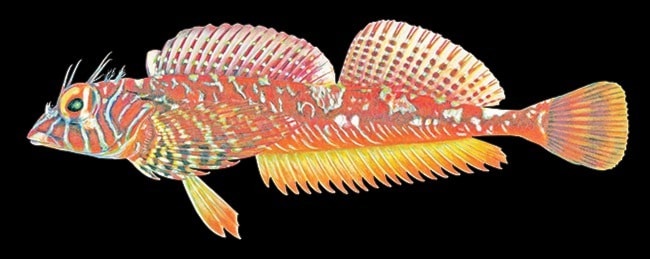Coho salmon may need to move over and make room for the likes of the Pacific viperfish, long snout prickleback and Jordania Zonope.
According to a new report spearheaded by University of Washington biologist Ted Pietsch, Fishes of the Salish Sea: a compilation and distributional analysis, the number of marine fish is up 14 per cent in the Salish Sea from the last survey conducted in 1980.
That makes for 253 fish species in the Salish Sea, which encompasses the Strait of Georgia, Puget Sound, the Strait of Juan de Fuca, the San Juan Islands and the Canadian Gulf Islands.
In total, 37 new species were added, and five species were removed from the list because researchers couldn't find evidence of their presence in the Salish Sea.
VIU Deep Bay Marine Field Station manager Brian Kingzett said the data comes as no surprise — but it opens the door to a plethora of possibilities.
"As water warms it's absolutely expected we will see new and novel species as the species move northward," he told The NEWS Tuesday, noting the North Pacific is about three degrees warmer offshore.
"This is also being seen in Europe."
Subsequently, Kingzett said fish native to the Georgia Strait may also move northward as water warms.
“This could mean predator-prey interactions change as well, for example, we could get highly predatorial species we don’t have,” he said. “Probably the biggest ramifications will be for local fish in things like the warming of freshwater returning salmon like Sockeye as the water may get too warm or too dry.”
The report, published last week by the National Oceanic and Atmospheric Administration, includes a full taxonomic list as well as an analysis of geographic distribution and relative local abundance, along with common and scientific names and key references to learn more about each species.
“It’s quite astonishing to think that people haven’t really known what’s here in any detail,” Pietsch said. “In preparing this report, we’ve really turned over every stone to make sure we have every fish species ever recorded from our inland marine waters.”
The paper’s other author is Jay Orr, a scientist with the Alaska Fisheries Science Center and a former graduate student of Pietsch’s. Their exhaustive report represents the first thorough survey and analysis of Salish Sea fishes in 35 years.
The report is a precursor to a book coming out in the next few years that will feature illustrations of all 253 Salish Sea fish species.
This report and the eventual book will be useful for scientists, anglers, educators and others in identifying Salish fishes, tracking the distribution and abundance of known species, assessing the health of their habitat and determining when these populations might be in danger of disappearing.
“If you don’t first know what you have, it’s impossible to know what you might be losing,” Pietsch said.
